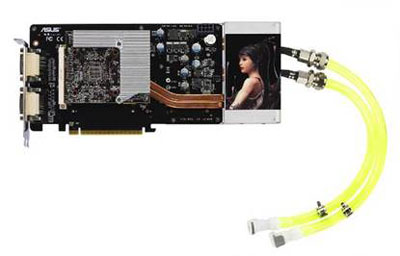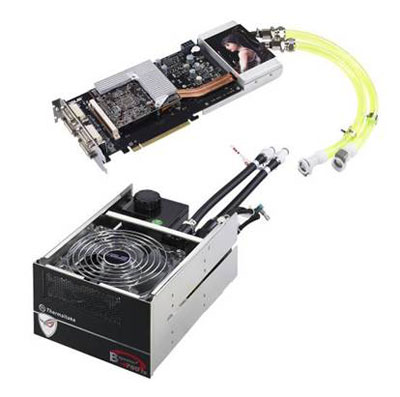A whopping 139% speed improvement over single-GPU solutions
Earlier this year, the placing of two Radeon HD 3870s onto a single PCB culminated in the Radeon HD 3870 X2 - a card which we stated put AMD firmly back in the game.
Now, the cunning engineers over at ASUS have taken the next step. Well, kind of. As opposed to the quicker RV680 reference design found in the HD 3870, they've gone and squeezed three of the HD 3850's RV670PRO GPUs onto a single card. The result? The ASUS EAH3850 Trinity.

Just before our readers start to salivate uncontrollably, we'll make it clear that Trinity is in fact just a concept model. To make it even clearer, ASUS categorically states that "Trinity is purely an engineering sample and will not go into mass production".
Still, we've got to ask; what if? Well, if you were to get your hands on a triple-GPU-in-one Trinity card, ASUS tells us you'd see a performance boost of 139% when compared to single-GPU solutions. 139% does sound good, but with two extra GPUs at hand, why not a higher boost? Well, that brings us back to the familiar problem facing multiple GPUs on a single card: scaling.
Naturally, if the number of cores is going up, ASUS has opted to take the amount of onboard memory up a notch too. Trinity packs 1.5GBs of GDDR3 memory and a handy set of four DVI outputs - cause you know, four displays is the only way to game. All this however isn't without an obvious consequence - heat, and we'd guess plenty of it. That then would be why Trinity features "a specially designed water cooling solution – ensuring efficient heat dissipation for stable performance".

ASUS tells us that Trinity "is able to truly deliver a world-class graphical performance – allowing users to fully enjoy games or movies without lag or stuttering even at very high resolutions and maximum quality settings."
The complete specification, according to ASUS, is as follows:
Model |
EAH3850 TRINITY/3DHTI/1.5G |
Graphics Engine |
Radeon HD 3850 |
Video Memory |
1.5G DDR3 |
Engine Clock |
660MHz |
Memory Clock |
850 MHz (1.7GHz DDR3) |
Memory Interface |
256-bit + 256-bit + 256-bit |
DVI Max. Resolution |
2560 * 1600 |
Bus Standard |
PCI Express |
DVI Output |
DVI *4 |
HDCP compliant |
Yes |
HDMI Output |
Yes, via DVI to HDMI adaptor |
D-Sub Output |
Yes, via DVI to D-Sub adaptor |
HDTV Output |
Yes, via HDTV Out cable |
TV Output |
Yes, via S-Video to Composite |
Thermal Solution |
Water Cooling System |
Adaptor/Cable Bundled |
DVI-to-D-Sub adaptor |
Software Bundled |
ASUS Utilities & Driver |
Hold on a second, software bundled? We thought this was a concept...errr...oooh...
Official press release: ASUS Unveils World’s First Onboard Triple RV670PRO Graphics Card













